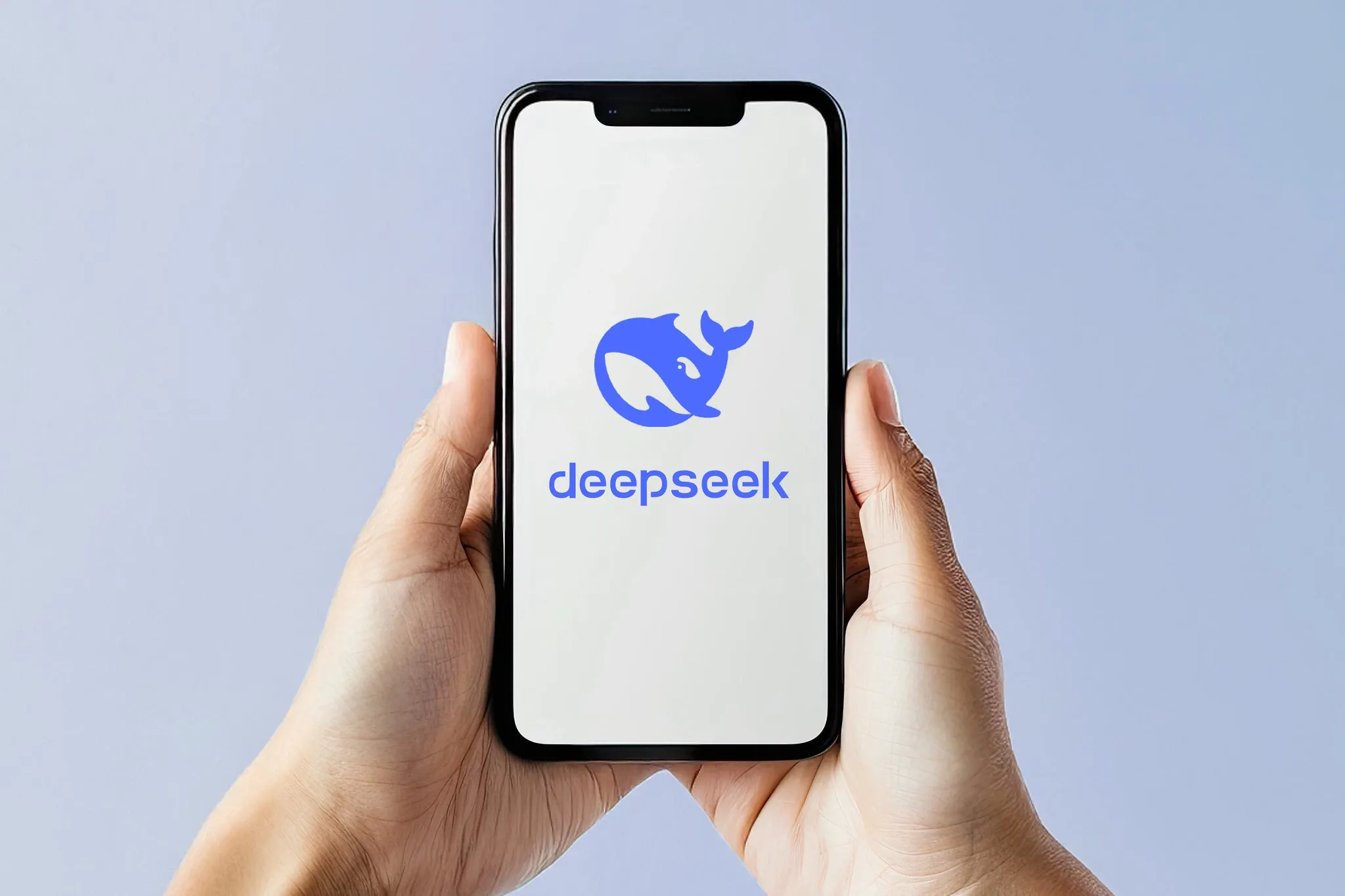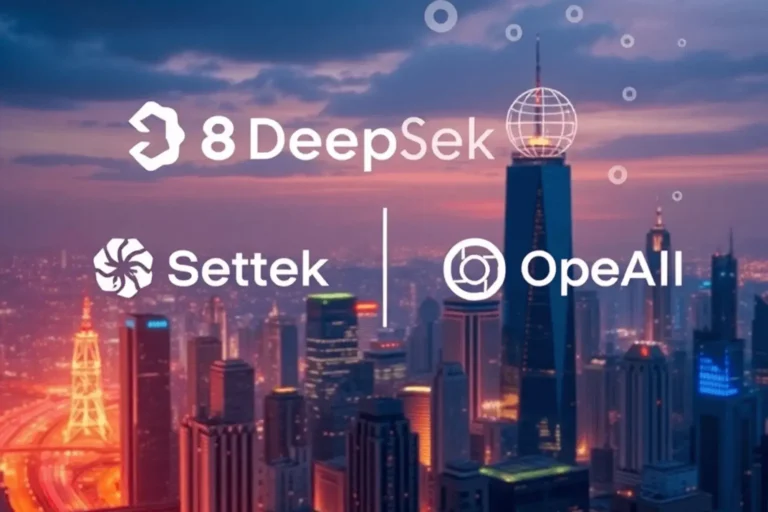The tech world has recently seen a dramatic shift in the market following the release of a groundbreaking low-cost AI model by DeepSeek. This unexpected development has sent shockwaves through the stock market, causing significant losses for some of the biggest names in tech: Microsoft, Nvidia, Meta, and Alphabet. As AI continues to dominate the conversation in the tech sector, this article will explore the reasons behind this sudden shift, how the market reacted, and the implications for the future of AI technology.
Understanding the AI Landscape
Artificial Intelligence (AI) has rapidly transformed from a futuristic concept to a central part of everyday life. Over the past decade, AI has become a focal point for innovation across various industries. From healthcare to entertainment, the applications of AI are vast, ranging from improving medical diagnostics to personalizing content on streaming platforms. As technology advances, AI has woven itself into the very fabric of modern society, influencing everything from how businesses operate to how we interact with technology daily.
AI’s potential to revolutionize industries has created a competitive landscape where tech giants like Microsoft, Nvidia, Meta, and Alphabet have solidified their positions as leaders in the field. These companies have invested billions in research and development, creating sophisticated AI models and platforms that power many of today’s cutting-edge technologies. However, despite their dominance, the AI landscape is far from static. New players continuously emerge, bringing fresh ideas and innovations that challenge the established order.
One such newcomer is DeepSeek, which has garnered significant attention for its groundbreaking low-cost AI model. Unlike the models from industry giants that often come with a hefty price tag, DeepSeek offers powerful machine learning capabilities at a fraction of the cost. This dramatic price reduction has the potential to democratize AI, making it accessible to smaller businesses, startups, and even individual developers who were previously unable to afford such advanced technology. This shift has caught the attention of both investors and established tech companies, raising important questions about the future of AI development.
DeepSeek’s model is being hailed as a game-changer, not only due to its affordability but also because it doesn’t compromise on performance. The technology is able to provide impressive results with significantly less computational power, making it more energy-efficient and reducing infrastructure costs. The impact of this innovation is felt across the AI ecosystem, as it challenges the dominance of companies like Microsoft and Nvidia, who have long been the primary providers of AI infrastructure and tools. This disruptive force could reshape the AI landscape, forcing established players to reconsider their strategies in order to stay competitive.
The Rise of DeepSeek: What’s the Big Deal?
- DeepSeek’s AI model stands out as more than just an update to existing technologies; it represents a major shift in how AI can be used across industries.
- One of the most significant features of DeepSeek’s model is its ability to make advanced machine learning tools available to smaller businesses and startups that could never afford such technologies before.
- The model is offered at a significantly lower price point than the offerings from the established tech giants, providing a competitive edge to companies with limited budgets.
- Despite the lower cost, DeepSeek does not sacrifice performance, ensuring that the technology still delivers high-quality results comparable to the more expensive models in the market.
- This affordable AI model has the potential to democratize access to machine learning, enabling a broader range of companies and individuals to innovate and adopt AI solutions in their operations.
- DeepSeek’s design focuses on cutting-edge technology, allowing for faster and more efficient data processing, which is crucial in industries where time and efficiency are paramount.
- By using less computational power, the AI model is able to achieve remarkable results while maintaining a much lower operational cost, making it more sustainable for long-term use.
- DeepSeek’s model’s lower infrastructure needs mean businesses can access powerful AI tools without investing in expensive data centers and servers, which typically require significant capital.
- This shift toward affordability and efficiency poses a direct challenge to major players like Microsoft, Nvidia, Meta, and Alphabet, whose AI offerings often come with hefty price tags and high infrastructure requirements.
- As AI becomes more accessible, smaller businesses will be able to integrate AI into their operations, increasing competition for the big players and potentially disrupting the current market dynamics.
The Ripple Effect on Tech Giants’ Stock
| Company | Impact on Stock | Primary Concern | Reason for Concern | Future Outlook |
| Microsoft | Significant stock dip | Concerns over market share, particularly in the small business and startup sector | DeepSeek’s low-cost AI model could erode Microsoft’s dominance by offering an affordable alternative | Microsoft may need to adjust its pricing and offerings to retain its market position in AI |
| Nvidia | Sharp decline in stock price | Fear of reduced demand for high-end GPUs used in AI processing | DeepSeek’s AI model can perform with less computational power, reducing the need for Nvidia’s expensive hardware | Nvidia will have to innovate new AI hardware solutions or lower prices to stay competitive in the market |
| Meta | Noticeable drop in stock price | Struggling to keep up with more affordable AI solutions | Meta’s focus on high-cost proprietary AI solutions makes it harder to compete with DeepSeek’s low-cost model | Meta needs to reconsider its AI development strategies or face declining market relevance |
| Alphabet | Decline in stock value | Slow response to disruption and increasing competition from low-cost AI providers | Alphabet’s heavy investment in expensive infrastructure leaves it vulnerable to DeepSeek’s cost-efficient model | Alphabet must adapt quickly or risk losing its lead in AI to more nimble competitors like DeepSeek |
| DeepSeek | Rapid rise in interest and valuation | Disrupting the AI market with affordable and efficient alternatives to traditional AI offerings | DeepSeek’s ability to offer high-performance AI tools at a low cost is reshaping the competitive landscape | DeepSeek’s growth potential seems strong, as it continues to attract attention from investors and businesses |
How Did the Market React?
The stock market’s response to DeepSeek’s release was swift and mixed, reflecting both skepticism and concern. The major players in the tech industry, including Microsoft, Nvidia, Meta, and Alphabet, experienced significant declines in their stock prices. This drop in value was largely driven by the fear of losing market share, as investors began to question whether these companies could maintain their dominance in light of DeepSeek’s disruptive, low-cost AI model. The uncertainty surrounding the future of AI technology, and how it might evolve over the next few years, further fueled this concern.
The release of DeepSeek’s AI model not only affected stock prices but also had a notable impact on investor sentiment. Analysts began downgrading their forecasts for the big tech companies involved in AI, acknowledging the increased threat posed by new competitors offering more affordable alternatives. The sudden shift in sentiment left many investors hesitant about making long-term commitments to these tech giants. The emergence of a more cost-effective solution raised fears that established companies might struggle to stay competitive, especially as more affordable AI models could undermine their market positions.
This situation has created a sense of urgency among the major tech companies to reassess their strategies and respond to the disruption caused by DeepSeek. The pressure is mounting for these firms to adapt quickly in order to retain their foothold in the rapidly evolving AI market. Whether that means reducing prices, enhancing the capabilities of their own AI models, or exploring new areas of innovation, these companies must act fast if they wish to remain competitive and avoid losing ground to more agile newcomers like DeepSeek.
In many ways, DeepSeek’s low-cost AI model has served as a wake-up call for tech giants who may have been complacent, assuming that their market dominance in the AI space would always be secure. With the AI industry evolving so quickly, these companies now face the challenge of responding to the changing landscape or risk being outpaced by emerging competitors. The need for strategic adaptation has never been more critical.
Why Is the AI Model So Disruptive?
- Lower Costs, Same Power: The primary draw of DeepSeek’s model is its affordability. By cutting costs without sacrificing performance, it has made AI accessible to businesses of all sizes, leveling the playing field.
- Accessibility for Small Businesses: Previously, only large corporations with significant resources could afford advanced AI systems. Now, smaller companies and startups have access to the same powerful tools that were once out of their reach.
- Increased Competition: The success of DeepSeek’s model shows that the AI market is becoming more competitive. The established players, like Microsoft and Nvidia, may need to rethink their pricing models and business strategies to stay relevant.
- Less Need for Expensive Infrastructure: Traditional AI models often require massive amounts of computing power and infrastructure. DeepSeek’s model is designed to run efficiently with less hardware, reducing the need for costly data centers and servers.
The Future of AI: What’s Next?
| Potential Development | Impact on the AI Market | Key Players Involved | Challenges | Possible Outcomes |
| More Affordable AI Models | Lower prices for AI tools could democratize access to technology, enabling more small businesses and startups to utilize AI. | DeepSeek, emerging AI startups | Potential reduction in profitability for established tech giants | Widespread adoption of AI, increased competition, and innovation across industries |
| Innovation in AI Hardware | New AI hardware could enhance performance, reduce costs, and better support AI models. | Nvidia, AMD, startups in AI hardware | Developing new hardware that meets evolving AI needs while staying affordable | Creation of more efficient hardware, possible reduction in demand for existing high-cost products |
| Increased Regulation and Ethical Considerations | Greater focus on AI ethics, privacy, and accountability could lead to tighter regulations. | Governments, regulatory bodies, tech giants | Balancing innovation with ethical considerations and public concerns | Clearer frameworks for AI usage, possibly leading to a more standardized and regulated market |
| Focus on AI Integration Across Industries | More sectors will implement AI to streamline operations, reduce costs, and innovate. | Microsoft, Alphabet, healthcare, finance, manufacturing | Developing industry-specific AI solutions that meet diverse needs | A wider range of industries adopting AI, creating new market opportunities and business models |
| AI-driven Automation and Job Displacement | Increased automation in industries could impact employment but also increase efficiency. | Robotics companies, manufacturing, logistics | Addressing concerns of job loss and workforce displacement due to AI advancements | Shifting labor markets, with the potential for retraining and the rise of new roles in AI-related fields |
The Impact of DeepSeek’s Low-Cost AI on the Global Tech Landscape
The release of DeepSeek’s low-cost AI model has sparked a significant shift in the global tech industry, particularly in the AI sector. Until now, the AI market has been dominated by tech giants like Microsoft, Nvidia, Meta, and Alphabet, whose advanced models often come with steep price tags. However, DeepSeek’s innovative approach has introduced a new paradigm, offering high-performance AI tools at a fraction of the cost. This has led to widespread disruption in the industry, challenging the established players and raising questions about the future of AI development.
One of the most immediate effects has been the growing concern among investors about the long-term sustainability of the current market leaders. Microsoft, Nvidia, Meta, and Alphabet, which have all invested heavily in their AI research and development, have seen their stock prices take a hit. Investors are now questioning whether these companies can maintain their market share in the face of a more affordable, yet highly efficient, competitor. The fear of losing dominance in the AI space is prompting these companies to rethink their strategies, particularly in terms of pricing and product development.
Another major consequence of DeepSeek’s entry into the market is the potential for greater democratization of AI technology. Smaller businesses and startups, which have traditionally been priced out of accessing cutting-edge AI tools, now have the opportunity to integrate AI into their operations. This could lead to a surge in innovation across various industries, as businesses that were once limited by budget constraints can now leverage AI for everything from automating processes to enhancing customer experiences. The reduced cost of entry could also open the door to new market players and applications that we haven’t seen before.
Looking ahead, the rise of DeepSeek could drive a new wave of competition in the AI market. Companies that have relied on expensive infrastructure and models may need to adapt quickly to survive. This could lead to a re-evaluation of pricing strategies, with the potential for lower prices across the board. Additionally, we may see a shift in the type of AI solutions being developed—smarter, more cost-efficient models that don’t compromise on performance. The landscape is evolving rapidly, and as DeepSeek continues to disrupt the market, it’s clear that the future of AI will be shaped by affordability, innovation, and the ability to adapt to a new competitive reality.









